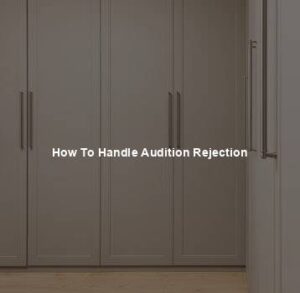
The Complete Recording Studio Equipment List
Studios go through 4 KEY stages in their evolution:
- Bedroom Studio–which is typically a small set up next to your bedside and is the absolute minimum you need to record sound into your computer.
- Dedicated Home Studio – which is typically a room in your house used solely for recording, that includes both studio furniture, and acoustic treatment.
- Semi-Pro Studio – which can be either at your home, or a different location, and typically includes the equipment necessary to record multiple musicians simultaneously.
- Pro Studio – which is typically located at a commercial facility, and includes whatever tools necessary to produce professional results in the most efficient way possible.
STAGE 1: The “Bedroom” Studio
While beginners always have that natural desire to want to learn everything, right away…The truth is…you really only need a few items to get started. And anything more will probably just confuse you. So if you don’t have a studio yet, a simple bedroom studio is the first milestone to aim for. And for a setup like this, you need the following 9 items:
- Computer
- DAW
- Audio Interface
- Microphones
- Headphones
- Studio Monitors
- Cables
- Microphone Stands
- Pop Filter
Now let’s look at each one in more detail…
1. Computer
These days, since recording studios are almost ALL digital… The first thing you need is a computer. And while you can just use any old computer, at-first… You should eventually invest in the best one you can afford. Because today’s DAW’s can be hard on processing resources. And making full use of its features requires a blazing-fast computer. So when you’re ready to upgrade, here’s what I recommend:
- The best Computer/Laptops for Music production in the recent past.
Typical Example:
- Macbook Pro– (Amazon/B&H/GuitarC/MusiciansF)
2. Digital Audio Workstation (DAW)
The digital audio workstation is the primary software used to record, edit, and mix music on your computer. Originally designed to mimic look-and-feel of analog mixing boards from the pre-digital era…Their visual design has remained basically the same ever since.
Pro Tools, which has long been the most famous DAW, great for studios of all levels…but it is by no means the only option.
Depending on your budget and style of music, the best one for you could be any one of around 10 possible options.
3. Audio Interface.
Once you’ve got the software, the next thing you’ll need is an audio interface…
Which has the primary purpose of providing all the connections to send your music:
- INTO the computer when recording, and…
- OUT the computer during playback.
Originally, this was pretty much all they did…
But today’s modern interfaces have evolved to incorporate many other features as well. Those include:
- digital conversion
- mic preamps
- DI boxes
- headphone amps
- monitor management
In pro studios, each of these items normally exists as high-end stand-alone units, organized within a rack.
In-home studios though, these “all-in-one” budget interfaces can be a great way to save money, and still get exactly what you need.

4. Microphones
The oldest item on this list by far… Microphones have been around since long before recording studios ever existed. Yet ironically, in all those years, very little about them has changed. And many of the top models from a half-century ago are still among the industry standards of today.
That’s not to say that microphones are a simple topic, because it’s actually quite the opposite. Recording studios typically carry several-dozen mics or more…each one used to achieve:
- a different sound.
- from different instruments
- in different situations

5. Headphones
Unlike most studio gear, headphones are one item that we’re all thoroughly familiar with. At least… that’s what most people assume. But truth is, while you may own a great pair of “consumer” headphones…For pro audio, there are 2 special types of studio headphones intended for 2 very specific tasks:
- closed-back headphones.
- open-back headphones.

6. Studio Monitors
In the pro audio world, we call them either studio monitors or near-field monitors.
And while they might look similar to plain old speakers… THEY’RE NOT. Compared to consume speakers, which typically accentuate certain frequency bands to improve the listening experience for certain audiences… Studio monitors are designed with the opposite goal of providing perfectly FLAT frequency response, so engineers can hear a mix as it truly is, flaws and all…so they can adjust accordingly.

7. Cables
In a typical pro studio, you’re likely to find hundreds of cables…With dozens of connectors that you’ve probably never even heard of. And the time will come when you own more cables than you can count. The good news is…in the beginning, all you need is 3:
8. Microphone Stands
The same concept applies to microphone stands as with studio cables. Eventually, you’ll have many. But for now, all you need is 1 or 2. And while you might assume that all stands are the same… They come in many shapes and sizes, each designed for specific tasks

9. Pop Filter
Although pop filters are not “essential” to a bedroom studio… For some strange reason, all newbies seem to want one. And most probably don’t even know what they’re for. So let me explain… One peculiar fact about your mouth is that it expels a strong burst of air whenever you pronounce “p” or “b” sounds. In normal conversation, you don’t even notice it. But when singing into a microphone, that blast of air is heard as a low frequency “thump” known as popping, which is both unpleasant to the ears, and unacceptable on a recording. Pop filters are designed to solve this problem by catching the blast of air before it hits the diaphragm of the mic.

STAGE 2: The Dedicated Home Studio
After recording music in a simple bedroom studio for a few months… You’ll probably notice a few things that bug the crap out of you. Besides the fact that your workspace is extremely cramped… Your biggest problem is probably that all your music sounds like it was recorded…well…in a bedroom! And after doing some research to figure out what’s going wrong… You will undoubtedly conclude that you now need a dedicated room for your studio…Where you can cultivate both a creative environment that will improve your workflow and an acoustic environment that will allow your recordings to at least sound semi-decent. So when that time comes, here are the 8 KEY items you need:
- Desk/Workstation
- Studio Chairs
- Bass Traps
- Acoustic Panels
- Diffusers
- Reflection Filters
- Monitor Isolation Pads
- Studio Monitor Stands
STAGE 3: The “Semi-Pro” Studio.
The biggest problem with the studio we just set up… Is that it only offers a few input channels. What this means is… it will be very difficult to record over one person at a time… And you can’t record acoustic drums, which can easily require 8 or more mics depending on the size of the kit. A studio of this caliber is fine for yourself and maybe one other person, but anything more and you’ll need some new gear. The other issue with our current studio is speed/efficiency… If you’re recording a lot, or you expect to charge clients by the hour… you should be able to work in a relatively time-efficient manner. Which is harder to do without certain tools?
So stage three follows with this new round of equipment:
- Rack Mount
- Power Conditioner
- Microphone Preamp
- Headphone Amp
- Monitor Management
- Virtual Instruments
- MIDI Controller
- Electronic Drum Kit
- Control Surface
- Software/Plugins
- Snake Cable
- Uninterruptible Power Supply
- Direct Box
STAGE 4: The “Pro” Studio
For 99.9% of us, STAGE 3 will have been the final level of our journey. Because the truth is… it’s tough to be successful in the pro audio business. And most of us aren’t looking to be professionals, anyway. But since many of you are at least curious about it, I might as well give you a few examples of how pro studios differ from amateur ones.
So, here’s the final list of equipment for STAGE 4:
- Digital Converters
- Master Clocks
- Analog Hardware
And here’s more about each one…
1. Digital Converters
Hidden within your audio interface and many other devices in your studio… Is a device known as a digital converter that has 2 simple jobs:
- converting analog audio into digital (A/D), and…
- converting digital audio into analog (D/A).
The reason you may not have heard of it is… in 99% of cases, digital converters exist as a side-feature within some other device.
In pro studios with big budgets, it’s common to find high-end stand-alone digital converters costing several thousand dollars each… Which have no other function than to deliver the absolute best digital conversion money can buy. Will it be the difference between a good mix and a bad one? Probably not. But for professionals, every little advantage counts.
2. Master Clocks
Another little-known device hidden within virtually every digital recording device is… Whenever you connect digital signals from two or more devices… The individual digital “samples” must align perfectly in sync. Otherwise, the resulting audio will be filled with annoying “clicks” and “pops” from the misaligned samples. In most setups, the audio interface clock defaults as the master, and the others as slaves. Meaning one clock leads, and the others follow.
However, with more complex systems, it’s much easier to use a stand-alone digital master clock to lead the entire system. And while there’s much debate about their impact on sound quality, some sources will tell you that a high-end master clock makes a noticeable difference.
3. Analog Hardware
Long before the days when mixing was done with software plugins… Common tools like EQ and compression existed only as stand-alone hardware in a rack. These days many of those units cost several thousand dollars each and offer only 1 or 2 channels. Now you might wonder…So wouldn’t I need dozens of those things just to mix a song? Well, the answer is… yes, you would. Luckily for us, we now live in an age where the modeled “digital versions” of these tools make our jobs both cheaper and easier…
Many of the world’s top studios still rely mainly on these ancient tools to get the job done. Because according to too many of the best ears in the business… analog gear still sounds better than any plugin.
Many of us “normal” guys blow absurd amounts of cash on a single purchase that may (but probably won’t) be that one missing ingredient we’ve been searching for.
Would I recommend it in most cases? Not really. But I promise I won’t judge you if you buy one, anyway.







